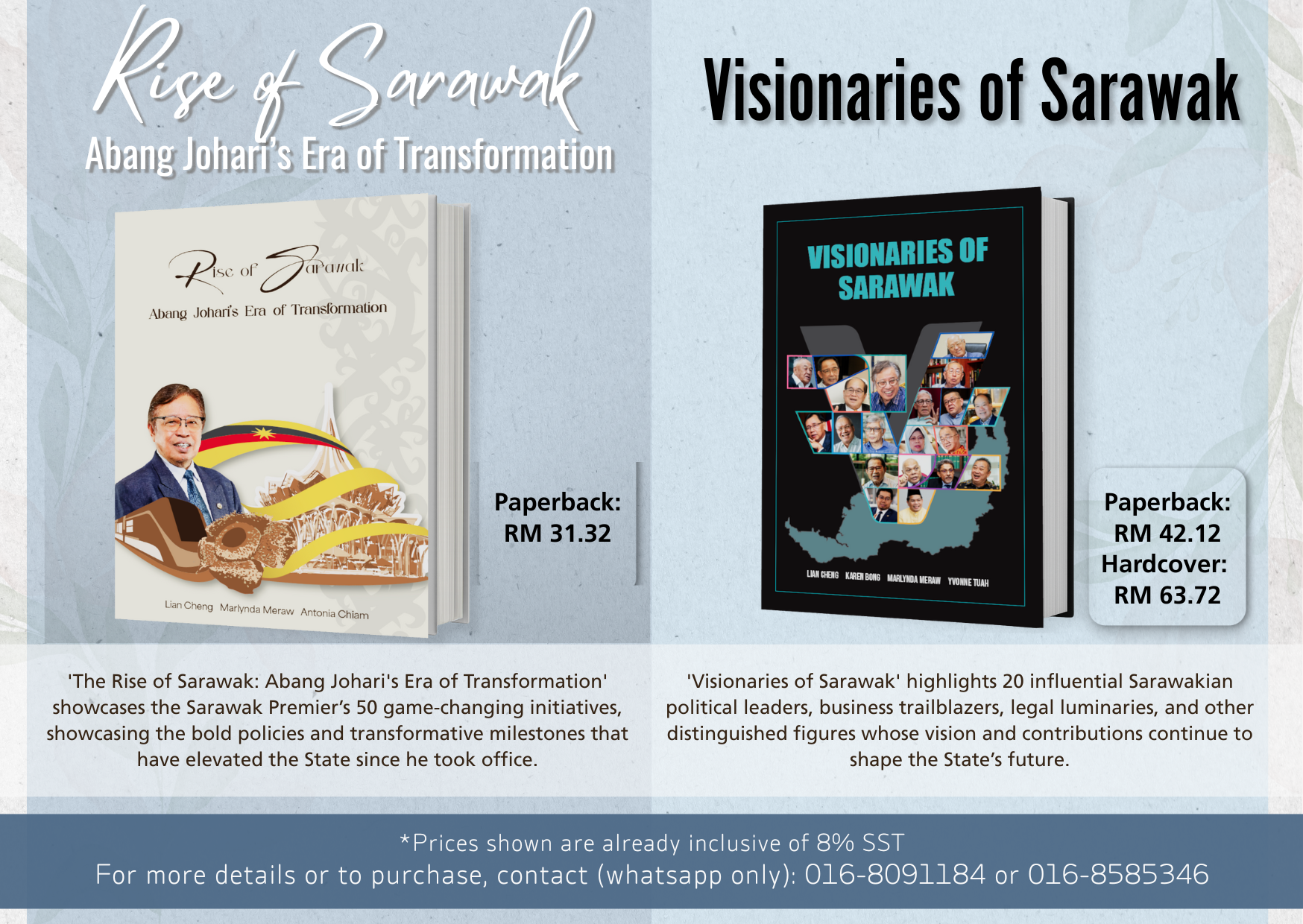
By D’Drift Team
THE day unfolds gently, bathed in the soft hues of morning light. We departed from our previous homestay with hearts full—grateful for the warmth we have received, yet tinged with the quiet sorrow that comes with leaving behind a place that felt like home.
But the road calls us forward, and with eager anticipation, we set our sights on our next destination—Uma Belor, a Kayan homestay located deep within the embrace of Sungai Asap, Belaga.
From Julau, we embarked on a journey that stretches nearly six hours, traversing winding roads and unfamiliar landscapes, pausing only briefly to catch our breath.
Along the way, a curious sight catches us off guard—a supermarket, standing solitary amidst the wilderness, rising like an oasis in a desert. A place of convenience in this remote expanse, it offers respite to weary travellers, a place for locals to replenish their daily essentials, and a moment of reprieve for those needing to stretch their legs before the road unfurls once more.

Upon resuming our journey, the road soon gave way to a quieter path, where the trees stood tall and unyielding, their emerald canopy offering a cool, shaded respite. Unlike the hurried cityscape, here the land breathes—untamed, boundless, and intoxicating in its untouched beauty. The crisp air filled our lungs, refreshing and pure, as though every inhalation draws in the very essence of the rainforest itself.
Finally, a grand archway towards the homestay signalled our arrival, ushering us towards Uma Belor. Before us stands a magnificent longhouse, a proof of the strength of community and tradition. Spanning seven blocks and stretching across 101 doors, it is a village unto itself—a place where history quietly lingers in the walls.

As we found our way to the homestay, we were greeted with open arms by our host, Connie Hurang. The accommodation itself is captivating—crafted for communal living, where shared spaces at the front, middle, and back of the house serve as gathering points, fostering the spirit of kinship that binds the community as one.
The rooms, though modest, hold all the comforts of home, adorned with intricate handwoven crafts—each piece a proclamation of pride, skill, and heritage.


As night fell, we were treated to a feast of Kayan delicacies. Freshly pounded tapioca leaves, fragrant and tender. Steamed catfish, wrapped delicately in leaves, its aroma rich with the promise of flavour. Rice, encased in its own leafy cocoon, and venison, bathed in a savoury soy glaze. Every bite is a tribute to the land, a taste of Kayan tradition passed down through generations.

For those yearning to experience the magic of Uma Belor, reservations can be made through Connie at 014-206 6094. A stay costs RM85 per person, inclusive of meals, with any specific dietary restrictions that can be told beforehand.
The guardian spirits of Uma Belor
Sarawak is known for its hornbills, but its rivers carry an older, more enigmatic presence—the ever-watchful crocodile. For the people of Uma Belor, the reptile is more than just a creature of the waters; it is entwined with their very existence, a part of their identity.
And so, upon our request, Connie began her tale.
Once, there was a boy named Jok Tok. He was drawn to the river, where he found love beneath its rippling depths. But one day, he did not return. His father, desperate to find him, scoured the banks, questioning his friends. The truth was a whisper on the wind—Jok Tok had been taken by a crocodile.
A year passed. Then, one day, as children spun their tops in the field, a figure emerged from the shadows.
“I can’t stay for long,” he said. It was Jok Tok—returned, if only for a fleeting moment. He had become part of the river now, wedded to the crocodile, a father to its child. And with that, he was gone.
The story lingered in the air like mist over the water. It is said that the people of Uma Belor share a familial bond with the crocodiles—that somewhere, in the depths, their kindred spirits still watch over them.

Yet the spirits of the land, too, had laid their claim upon this place. Eling, another storyteller among them, spoke of his ancestor, Hurei Gei, and her fateful encounter with a beast of the jungle.
One day, while she was tending her fields, a roar split the air, shaking the very ground beneath her feet. She turned to find a tiger, its golden eyes locked onto hers, moving with the grace of a predator ready to strike. Panic surged through her, but as she braced for the inevitable, she saw something—something caught between its teeth. A bone, wedged deep.
Summoning courage beyond fear, she stepped forward, sickle in hand, and freed the creature from its torment. In an instant, the tiger was no longer a beast but a man, standing before her in human form.
He spoke words of gratitude, a vow sealed in the lands: from that day forth, the tiger’s spirit would watch over her descendants, unseen but ever-present, guarding the people of Uma Belor.
The night deepened, and the stories lingered in the air like smoke from the hearth. These were not mere tales—they were the breath of the land itself, told from generation to generation, reminding the people of their sacred ties to the spirits that walked among them.
Bakun Lake: A new chapter on sacred land
Not long after our arrival, we set out once more, this time in search of the waters that had transformed the destiny of many. Bakun Lake lay an hour’s journey away, a vast and tranquil expanse that now held memories for most.
Before the great dam rose and the valleys filled with water, this was where Uma Belor once stood—a land where traditions flourished, ancestors rested, and the rhythms of life followed the river pulse. When the waters came, the people embarked on a new journey, carrying their heritage with them to the resettlement of Sungai Asap.
Uma Belor was just one of fifteen settlements that became part of this transformation, its people joined by those from Uma Kulit, Uma Daro, Uma Nyaving, Uma Kelap, Uma Bawang, Uma Balui Liko, Uma Balui Ukap, Uma Bakah, Uma Badeng, Uma Penan Talun, Uma Juman, Uma Lesong, Uma Ukit, and Uma Lahanan. Most were Kayan, but among them were the Kenyah, the Penan, the Kajang, and the Ukit—the latter, a small and rare community among the Orang Ulu.
With Luhat Tugau as our guide, we ventured towards the lake, the road dipping and climbing as if it, too, remembered the shape of the land before the waters arrived. Then, as we descended a slope, the view stretched before us, a shimmering expanse of blue reflecting the sky. In the distance, half a rainbow arched over the water—a reminder that even in change, beauty and resilience endure.

We boarded a boat, the engine humming as we glided across the water. What were once mountaintops now stood as islands, their peaks breaking the surface where entire villages once flourished. Bakun Lake was more than a body of water; it was evidence of the adaptability and spirit of its people, a place where history and progress converged in harmony.
For an hour, we drifted, letting the lake tell its wordless story, until the skies darkened, the rain waiting just beyond the horizon. We returned just as the first drops began to fall, as if the heavens themselves were offering a blessing upon this shifted landscape.
Sungai Asap, in all its beauty, held treasures for those who seek them. The warmth of its people, the richness of its stories, the lingering spirits of its past—all waiting to be discovered by those who take the time to look. –DayakDaily









